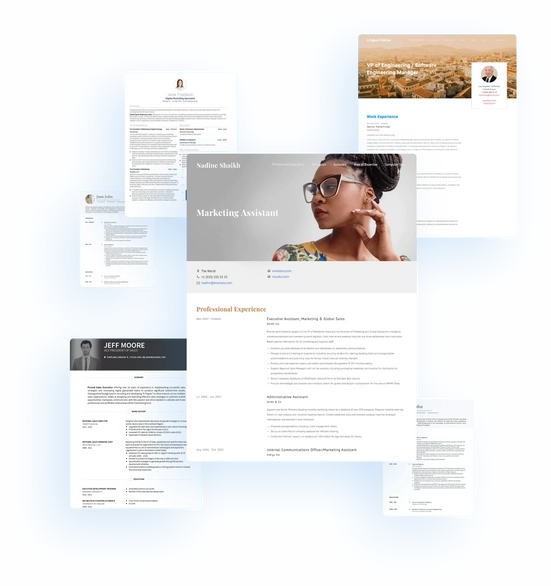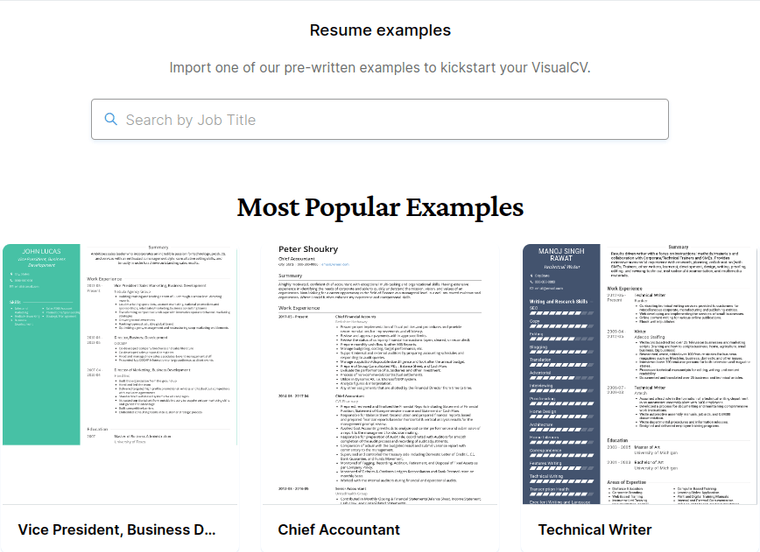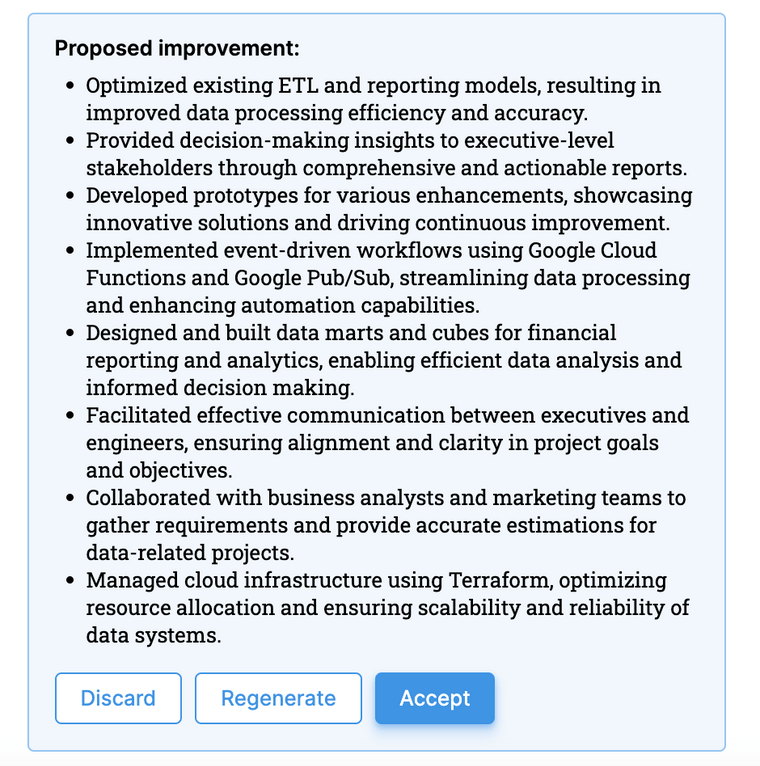


When a hiring manager looks at a resume, they scan where you work, how long you worked there, and what you did there, among other things.
If you are here, you want to understand listing dates on your resume better. After all, it is one of the critical things a hiring manager would scan for.
Format of dates on resume, the length of dates on resume, what dates to include on a resume, and where to list dates on a resume - we will be diving deep into these questions to help you add dates on resume in the best way possible.

Dates are important and should be added to the resume because:
To do your dates right, you should first look at different date formats that exist to list. There are a few different formats that you should use:
These date formats for resumes are then further divided into:
We will also provide you with templates for dates on resume that you will be able to add to certain sections of your resume with confidence.
You can add dates in the following sections of your resume:
Let’s take a look at each of these with a bit more depth.

You can’t get this one wrong. You should put your start and end dates for each job title on your resume’s work history.
Almost every recruiter would want to understand how long you worked. Dates on work history allow them to see what you did/achieved during that time.
Finding it hard to write your resume? - Try our AI resume builder Try our AI Resume Builder for free
Dates on your resume also allow them to total the duration of your work under a specific job title.
[Company name], [Start month, year - End month, year] [City, State] [Job title> [Job description]
[Company name] [Start month, year - End month, year] [City, State] [Job title] [Job description]
[Company name] [Start month, year - End month, year] [City, State] [Job title] [Job description]
[Company name], [Start year - End year] [City, State] [Job title] [Job description]
When you add dates on resume’s work experience section - if worked in a role for too long (>5 years) - adding years instead of months should be fine (e.g. 2020-2021). However, whenever possible, we recommend adding months.
When you put a date to your certifications - that makes it easy for a recruiter to see whether you are certified or not, how long you have been certified, and when your certification would expire.
Also, think about a contractor that has to be certified - a valid certification prioritizes someone applying for a contractor role over someone who doesn’t have a valid certification.
You can use these templates provided below to put dates on your resume’s certification.
[Name of the certification], [Certification number] - [Start Month, Year]
[Name of the certification], [Certification number]: [Start Month, Year]-[End Month, Year]
[Name of the certification], [Certification number]: [Start Year]-[End Year] [Name of the certification], [Certification number]: [Start Year]
[Name of the certification], [Certification number]: [Start Year] [Name of the certification], [Certification number]: [Start Month, Year]
When you put dates on your resume’s education section, you help an employer by:
That’s why we recommend that you add dates to your education history on your resume. There are a few templates that you can use to put dates on your resume’s education section below.
[Degree] [GPA] [Start Month, Year - End Month, Year]
[Degree] [Start Year - End Year]
[Degree] [GPA] [Start Month, Year - Expected Date of Completion]
Adding dates to awards is considered valuable to your resume.
While you may not think much about it, an employer will try to see if they can find what you were awarded for.
An employer searching for what award you received is the impact you would like to leave on an employer.
The date formats below will show you how to add dates to your awards on resume.
[Award name] [Year]
[Award name] [Month, Year]
One thing to consider while listing your award dates on your resume is whether an award is a yearly award or a monthly/quarterly award:
Now, as you can see, both of these can be solved by simply adding a date to volunteer position(s).
You can date formats similar to how you would put them in your work history section. We would recommend that you keep them consistent.
[Company name], [Start month, year - End month, year] [City, State] [Volunteer Position] [Volunteer work description]
[Company name] [Start month, year - End month, year] [City, State] [Volunteer Position] [Volunteer work description]
[Company name] [Start month, year - End month, year] [City, State] [Volunteer Position] [Volunteer work description]
[Company name], [Start year - End year] [City, State] [Volunteer Position] [Volunteer work description]
Adding dates to presentations or speaking engagements has the same value as adding dates to your awards. It makes your resume look impressive, builds rapport, and generates curiosity.
[Presentation/Speaking Engagement] [Location] [Month, Year]
Now that we have the right format to add dates and we know where to add dates - let’s take a look at a couple of frequently asked questions.
We will strongly advise against doing so. Even slight discrepancies in dates on resumes (especially employment dates on a resume) led to the rejection of qualified candidates in past.
Getting rejected as a result of wrong dates is even more like if the employer is using a third-party background check company or an automated product. While you made a small mistake, all the employer would see is that the dates of employment are wrong without any further context.
Never let a wrong date on your resume make you lose an opportunity.
Yes, dates related to mandatory training that you go through count as the start date of a position and should be included in your resume.
Once you submit your resume with date discrepancies, you still have a chance to rectify it. There are two ways to do this:
Yes, you should add employment dates on your resume. Follow the format of either Start Month, Year – End Month, Year, or Start Year - End Year.
Including months along with the year is recommended on your resume. Listing month in dates plays an even more important role when you worked for an employer for less than a year.
For example, 2021-2021 would convey nothing, but Jan 2021-Nov 2021 would tell that you worked for a total of 11 months for a specific position/employer. Adding months in date also plays a significant role in:
If you feel that anyone from the above is relevant, you should consider adding months to your resume.
This depends on the platform you are using to write your resume. On Google docs and MS Word you can use “Tab” or if you are using a resume builder, you can select a template that comes with right aligned date formats.
To list the same job with different dates on a resume, simply follow the date format:
We would recommend against a resume without dates. Not having dates on resume raises questions and makes it harder for employers to understand your total experience.
Table Of Contents